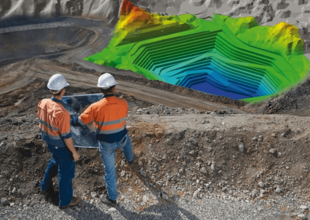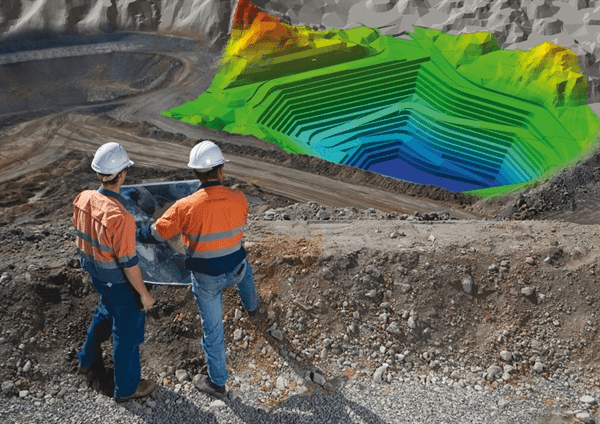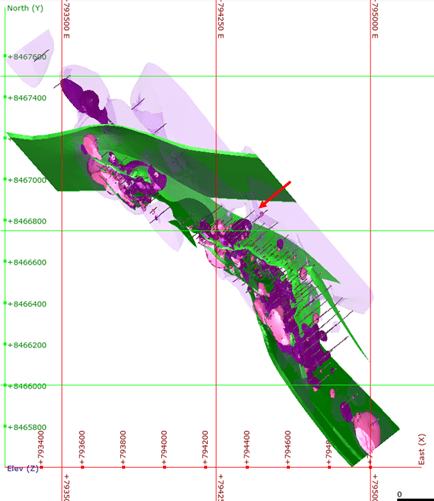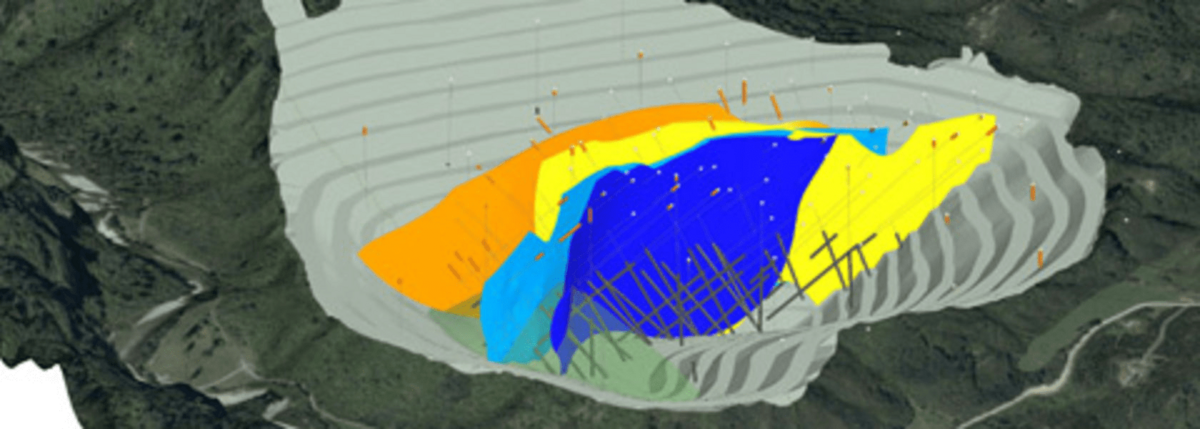Geological Modeling is the process of converting and reconstructing geology and its processes into a 3D computer model. The model includes structural, lithological, geochemical, geophysical data, channel data, trench data, borehole data and other field sampling data.
In other words, all available data are integrated into a three-dimensional model of geology – on the surface and below it. Detailed knowledge about a mineral reserve is the key to evaluating the economics of mining enterprises.
Mine Planning, on the other hand, is the process carried out to determine the most efficient methodologies and activities for mining and extraction, aiming at the best use of mineral resources.
Do you know what the relationship between the two concepts is?
In this material we will address important notions about each of the topics and the relationship between them, covering the following topics:
- Geological Models and Mine Planning Basics
- Relationship between the Geological Model and Mine Planning
- Main software used
Geological Modeling
The geological model is a computerized representation of lithologies, structures, geochemistry, geophysics and sampling data (borehole, channels, trenches, etc.) on or below the surface of Planet Earth (Fallara et al., 2006).
A 3D model is the result of the union of:
- Geological mapping;
- Structural analyses;
- Geophysical data;
- Analysis of polls;
- Analysis of samples in the laboratory;
- Geochemical analyses;
- Geophysical data;
As this work is done, it becomes possible to identify where the mineral resource (ore) is located, what are the limits, its quality and quantity (content) and the nature of the environment where this mineral resource is located, for example. Thus, sections are created that will define the scope of the body under study.
The generated product illustrates the evolution of the geological knowledge of a deposit, in which it is possible to quantify and qualify the mineral resource. This is a preliminary and essential step for Mine Planning.
Modeling can be classified into two main types: explicit and implicit modeling.
Explicit geological modeling
In this type of modeling, the contours of the ore body are manually digitized, as individual cross-sectional geological interpretations, across the entire length of the ore body and then joined to create final models. The geological model is therefore a direct function of manually constructed surface elements.
Implicit geological modeling
It is a process where the model is rendered by evaluating a set of input data through a mathematical function. This process eliminates the heavy lifting by using mathematical tools to visualize different aspects of the data in 3D. Discrete variables, such as lithologies, can be used to construct surfaces, as well as continuous variables, such as ore grades.
Rather than presenting a model built from rigid geometric constructions, the visualizations echo the natural forms found in reality.
Mine Planning




Mine planning begins after obtaining prior information about the deposit to be exploited. This stage determines, for example, the mining method to be used throughout a mining operation.
For efficient planning, we seek to incorporate relevant data from all fields related to mining: geology, geotechnics, geochemistry, hydrogeology, mining operations, waste and tailings management, environment, social sciences, mine closure , among others.
Proper mine planning is essential for the success of the project, as it is the decisive process for the management, development and success of mining activities.
Data provided by the Geological Model for Mine Planning
By analyzing geological models, it is possible to evaluate the spatial organization, volume and estimate the content of subsurface deposits. This is because, based on three-dimensional models, it is possible to classify and interpret rocks and their structures, thus resulting in an increase in the quantity and accuracy of information, reducing risks inherent to mining activities.
Geological models help provide the following data for mine planning:
- Geometry of the mineral deposit;
- Deposit thickness and volume;
- Presence of geological structures;
- Best way to safely maneuver workers, equipment and materials;
Geological modeling can be carried out continuously , while the mine is in operation, assisting in short and long-term mining planning, making it possible to indicate other locations where there is ore.




Geological Modeling and/or Mine Planning Software
Currently, with continuous technological development, there are a number of different software on the market that aim to produce mining planning based on three-dimensional geological models.
Geological modeling software:
- Datamine
- Leapfrog
- CADSMine
- SURPAC
- VULCAN
- MINEX
Mine Planning Software:
- Mine2-4D
- MINEX
- XPAC
- Minesight
- VULCAN
There is a clear shift in the mining industry regarding the needs of the geological model: it is one of the first steps in the resource evaluation process and its main function is to define the physical properties and characteristics of the ore body.
In this way, the geological model has a dominant impact on the entire mine planning process.
Would you like more information about geological modeling and mine planning?
Our team is made up of geologists, mining engineers and technicians who work in a pragmatic manner, always seeking the best and most innovative solutions for our clients.
Building geological models requires time and specific planning, with teams specialized in the subject, so if you need a team to help you with work like this, count on DMT!
References
- Igeological ;
- Mining Magazine ;
- Research Gate ;
- GeoScienceWorld ;
- Indian Minerology ;
- Seequent ;
- Help Seequent ;
- Deacon, Jacques (2017) Explicit and implicit geological modelling methods in resource definition and resource utilisation – Sishen iron ore deposit case study, University of the Witwatersrand, Johannesburg, < http://hdl.handle.net/10539/24010 >
